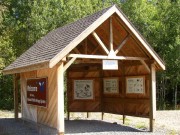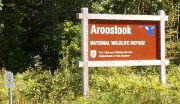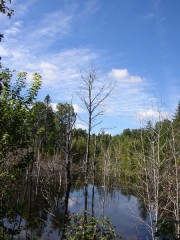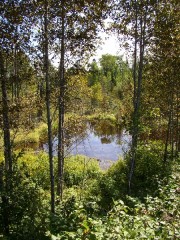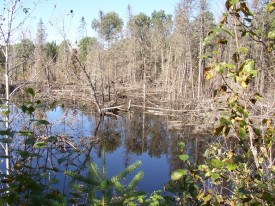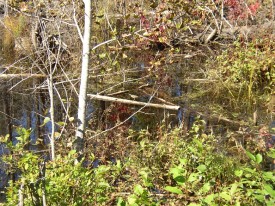was created from a portion of the former Loring Air Force Base, which extended for 9,000 acres in the town of Limestone, and other sections in Caswell and Connor Township.
One of the many nature preserves in Maine, it was established in 1998 when 4,700 acres were transferred from the U.S. Air Force to the U.S. Fish and Wildlife Service. The Refuge also administers some 2400 acres of wetland conservation easements throughout Aroostook County.
The Refuge, a staffed satellite of the Sunkhaze Meadows National Wildlife Refuge, protects valuable wildlife habitat, which in turn attracts a diverse community of plant and animal species.
According to the Refuge website in 2014,
What was once a strategic military base for half of a century has now been restored to an ecologically diverse assemblage of federally protected lands in northern Maine. Extensive restoration of the site began immediately after the establishment of the refuge. Demolition of military buildings and cleanup of contaminated soils has taken place since the refuges establishment. The refuge manages lands to conserve and protect a diversity of native wildlife habitats and species. The Aroostook National Wildlife Refuge is the northern most National Wildlife Refuge in the northeastern United States.
An abandoned rail line provides the course for the future development of hiking trails in the newly accessible refuge.
What appears to be the upland sandpiper is stalking lunch on the log in the center of the photo (right) above during the late summer. (click to enlarge)
Additional resources
United States. Fish and Wildlife Service. Aroostook National Wildlife Refuge. “About the Refuge.” http://www.fws.gov/refuge/Aroostook/about.html (accessed March 5, 2014)



